Pruning Lantana: How To Prune 2 Types Of Lantana Plants
Lantana is a very popular landscape plant that is used in many different ways. It’s classified as a flowering perennial and comes in shrub form and ground cover/trailing. It flowers from spring through fall (who doesn’t love that?!) and is available in various colors and combos. Here, you’ll learn about pruning lantana, including how to do it, and good things to know.
I’ll show you how I prune my Lantana camara “Dallas Red,” a shrub that grows to around 4’x 5′, and my Lantana “New Gold,” a ground cover at 1-1/2′ x 4′ that’s a hybrid of Lantana montevidensis x L. camara. Both are prolific bloomers that attract a multitude of hummingbirds and butterflies.
Many lantana varieties are available on the market, and these pruning techniques apply to all of them.
Note: This was published on 3/20/2019. It was updated on 8/31/2024.
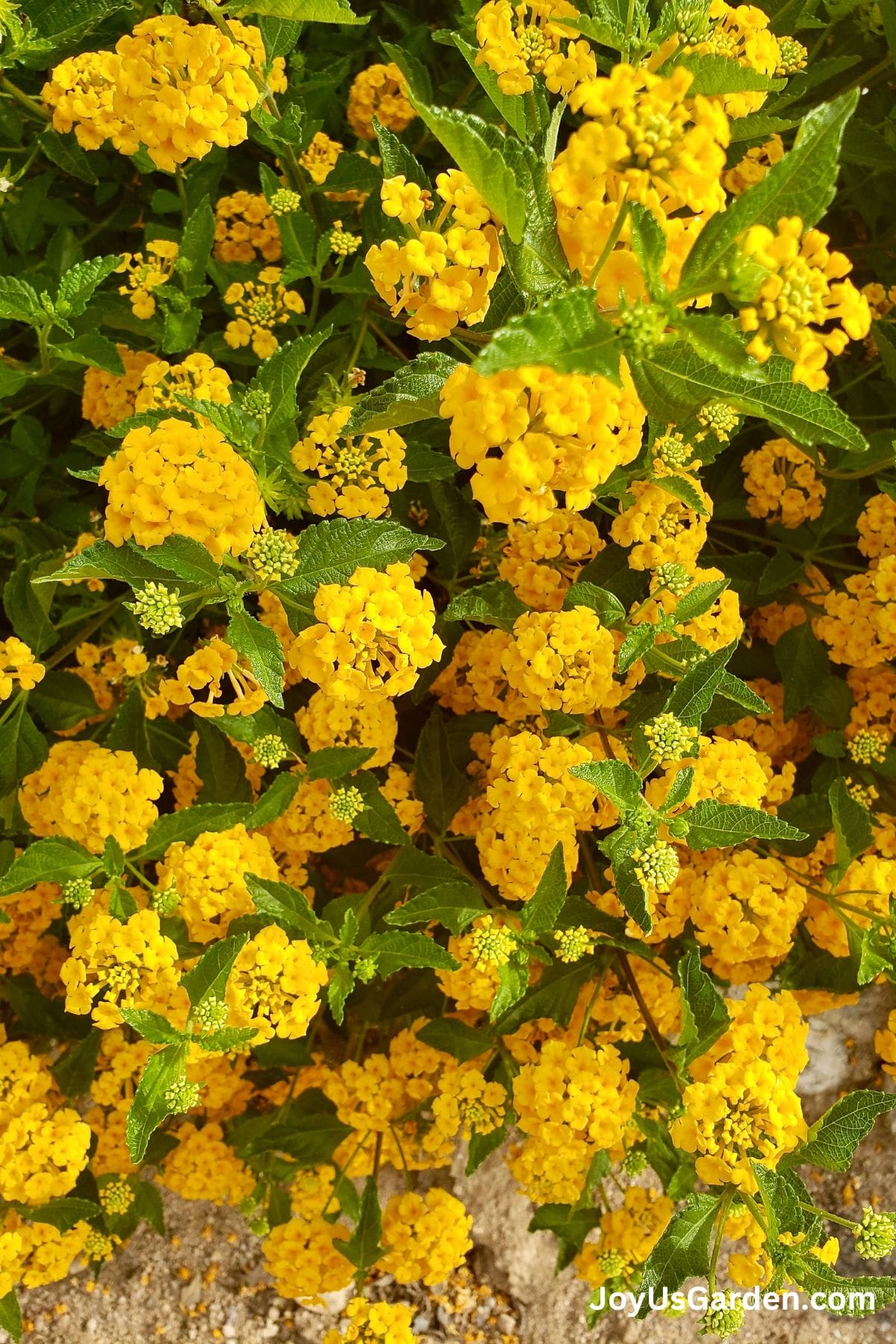
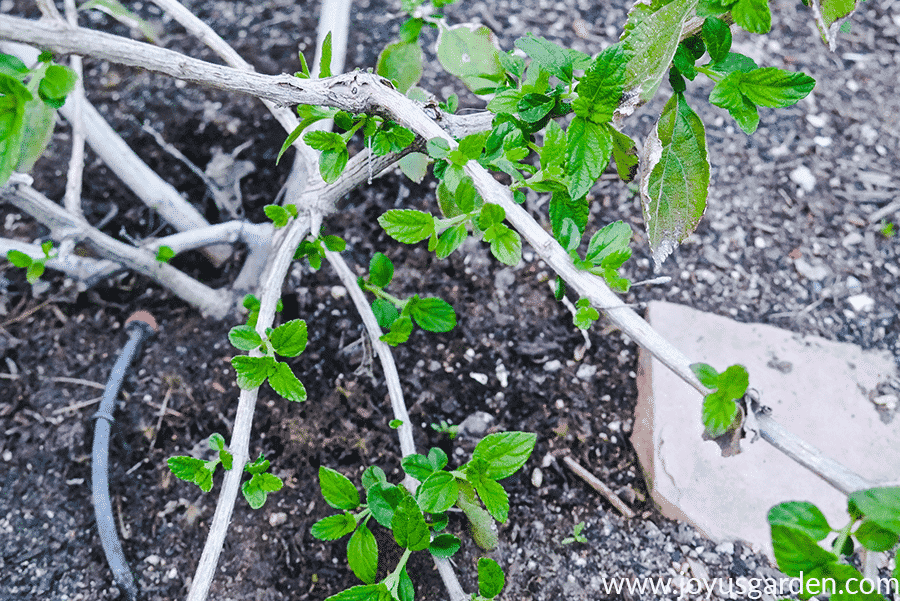
A Guide To Pruning Lantana
They’re grown as perennial plants in California, Arizona, Texas, Louisiana, Mississippi, and Florida because of the long flowering season.
Popular lantanas include trailing purple, trailing white, miss huff, irene, confetti, new gold, radiation, dallas red, and teenie genie.
It’s native to tropical America and is hardy in USDA zones 8-11. Once the weather warms up, lantana grows very fast and can handle the summer heat in Tucson, where I now live.
Although it’s a perennial in many areas, it’s sold as an annual plant in colder regions. I was visiting my friend in Connecticut one summer. She had it growing as an annual in a pot on her back deck. The hummingbirds were very happy!
Why should you prune lantana?
Pruning promotes healthy plants and keeps them in good shape. Lantana has a long growing season and blooms nonstop for about eight months. It needs to be cut back regularly to prevent it from becoming leggy and ratty. It appreciates a rest after that long blooming period and before the new growth appears.
Lantana blooms on that new growth, so you want to encourage as much of it as possible. As new growth appears, consider pinching back the tips of the stems to encourage bushier, fuller growth, which will result in a more attractive form.
When should you prune Lantana?
In my book, the best time to give lantana its big prune is late winter or early spring. When I lived in Santa Barbara on the coast of California, it was in February. Tucson has colder winters, so I do it from early to mid-March. You want to wait until the danger of frost has passed and the evening temps are consistently above 38-40F.
In the summer months, I prune to shape if needed.
Some landscapers around here prune lantana hard (back to 6-12″) in November. I prefer to give mine a light trim in November and do the biggest prune in March.
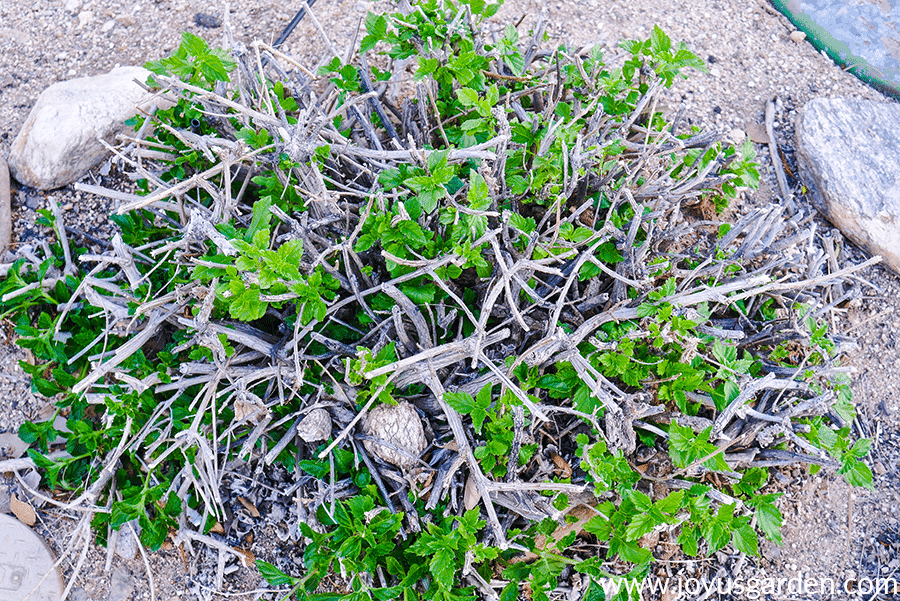
How to Prune Lantanas
First, make sure your pruning shears are clean and sharp. If you’re like me, you have a lot of spring pruning to do! This will help you make clean cuts straight across.
Remove the lowest branches touching the ground. All that new growth on top eventually smothers them.
Take out branches that are crossing over, weak, awkward, and any dead wood. This thins the plant out to get an idea of how it will look.
I cut out a few branches with my Dallas Red, which cold temps had hit.
Once the plant has been opened up a bit, prune the remaining branches back by 1/2. I always take out a few more branches towards the end, as my eye finds pleasing.
During the lantana pruning process, be sure to step back a couple of times and observe the plant’s appearance.
I take another snip or two in a few weeks if needed.
I spent 15 minutes each pruning my trailing lantana (new gold) and my shrub lantana (dallas red).
Post Pruning Care
Not much special care is needed, especially if your plant is established.
Water lantana after pruning, if needed, to help the plant recover from the stress. You’ll want to water it regularly, especially during hot, dry periods. Once established, Lantanas are fairly drought-tolerant but still need consistent moisture to thrive.
If your plant needs a layer of compost, now’s a great time to apply it.
Pruning Lantana Video Guide
Three Warnings Regarding Lantana
1) Lantana has somewhat pungent foliage. Some find the smell offensive, but I don’t. Let’s say it doesn’t bother me, but I wouldn’t want perfume made from it! The odor is released only when the leaves are handled, so you don’t have to worry about a stinky plant in your garden.
2) The leaves have a light sandpaper feel and are toxic. To some people, they cause skin irritation. It’s a minor dermatitis reaction, not a severe rash like poison oak or poison ivy. It has never aggravated me, but wearing gloves when pruning outdoor plants is a good idea.
3) Many cultivars and varieties produce green berries that turn dark blue/black. Despite their attractiveness, please don’t eat them. The berries are toxic. Even though lantana is toxic, it’s planted all over public areas. Don’t let this stop you from considering planting it; other common landscape plants are poisonous, too. There seem to be varying opinions on this subject as to how toxic lantana is, so do your own research if this concerns you.
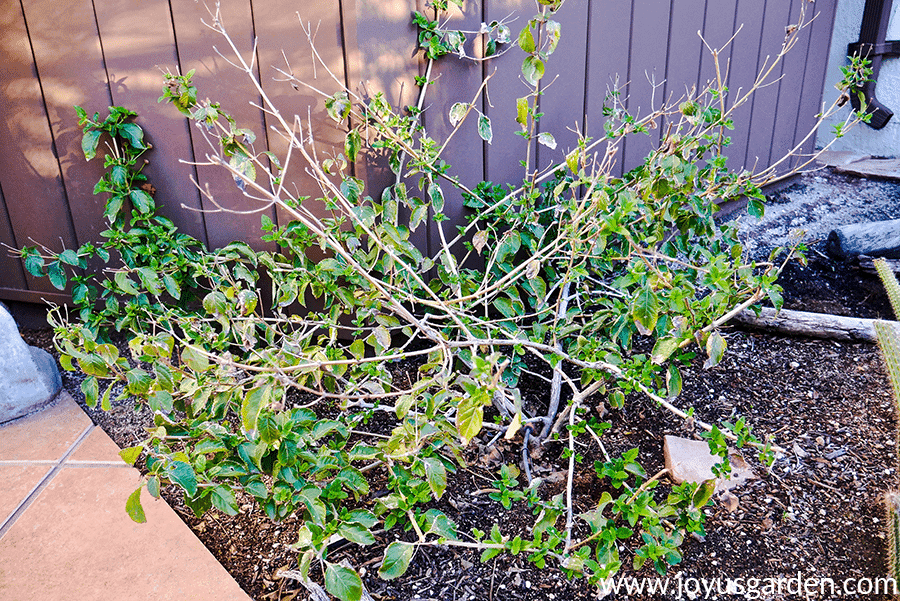

Good to Know About Pruning Lantana
Pruning lantana isn’t artistic or precise. Don’t be afraid to mess up if you’re pruning it for the first time. It’s forgiving and a vigorous grower. Unless you’ve done a scalp job, it’ll come back fast once the weather warms and the days get longer.
Lantana blooms on new growth, so you want to cut away some of the previous season’s growth to make way for the new.
You decide how much you take off. I stick within the range of taking it back by about one-third of its height and width. The scalping method isn’t for me.
Lantana is semi or fully deciduous where the winters are cooler, like here in Tucson. Don’t be alarmed if your plant loses its leaves. The new growth that appears will be abundant and much prettier than the old growth.
Speaking of the previous season’s foliage growth, some will fall off by spring, and some will still be on the plant. It’ll eventually fall off as the new growth fully emerges.
If you remove the old foliage, be careful not to rip off the new growth.
Because the plant grows so densely, dead growth can build up at the base. It’s good to remove it.
If you live in a humid climate and your lantana is growing in partial shade, it’s a good idea to thin it out to prevent powdery mildew.
Pruning old, overgrown plants can be challenging because they become so woody. Start by taking them back gradually and see how the plant responds.
It’s a good idea to thin this plant out because the new growth comes on vigorously.
To recap the pruning process during the growing season, I do the heaviest pruning in the late winter/early spring. I’ll do one or two much lighter ones to shape during the summer. Sometime in early November, I prune lightly to shape it going into the cooler months.
Lantana is easy to grow and provides a big pop of color. Care tips (in a nutshell) to keep it looking good: full sun, well-draining soil, and regular pruning.
Are you looking for advice on pruning other popular landscape plants? These guides on pruning Bougainvillea, Star Jasmine, Salvia, Tropical Hibiscus, and Geraniums will be helpful.
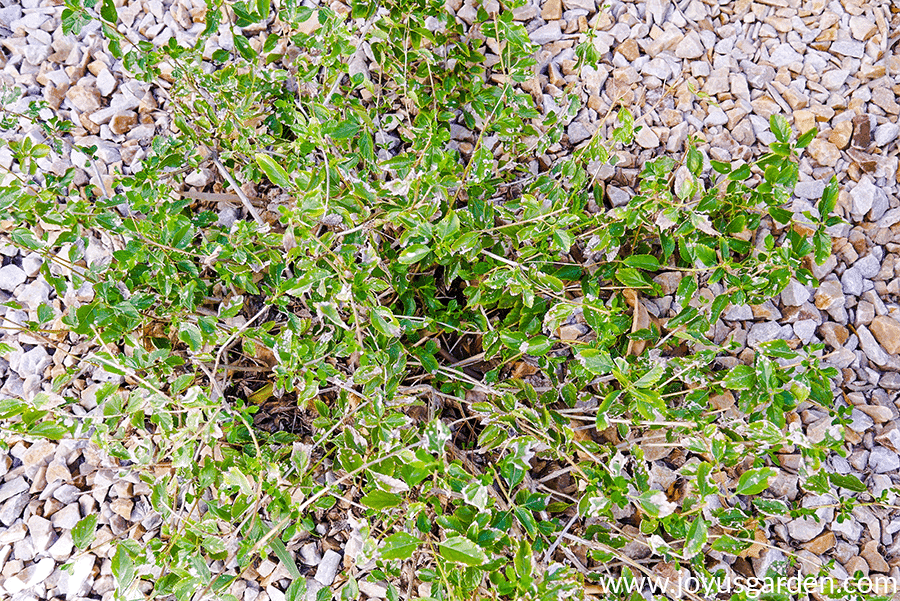
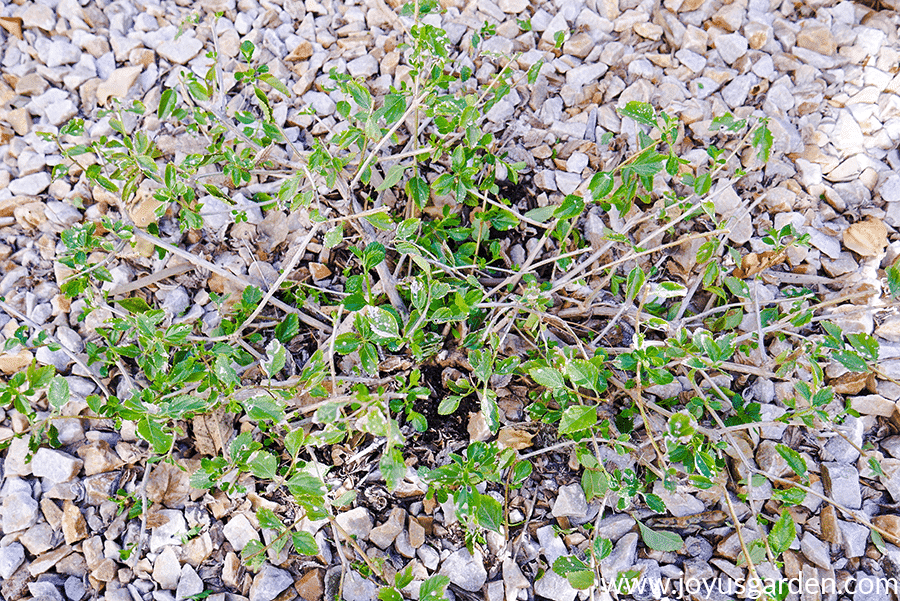
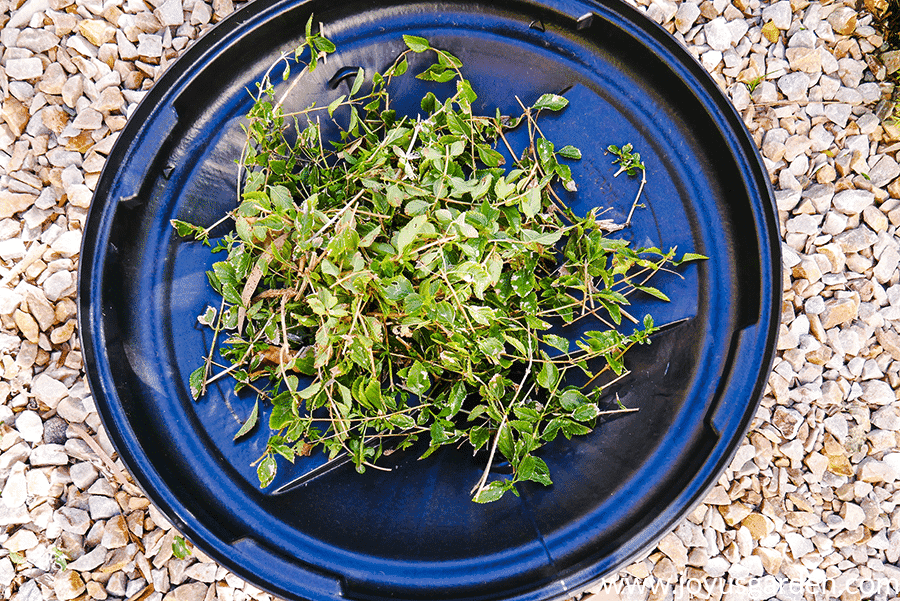
Lantana is very forgiving when it comes to pruning, which is a testament to how tough and resilient it really is. Pruning encourages healthy lantana plants. If you like non-stop blooming for months, give this plant a go. The hummingbirds and butterflies love lantana flowers and will be most grateful!
Happy gardening,

This post may contain affiliate links, you can read our policies here.

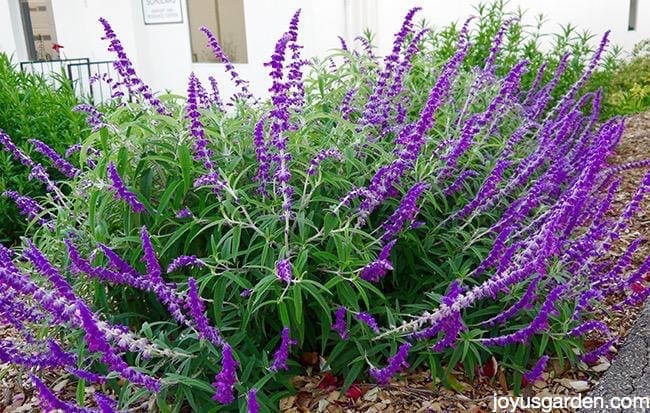
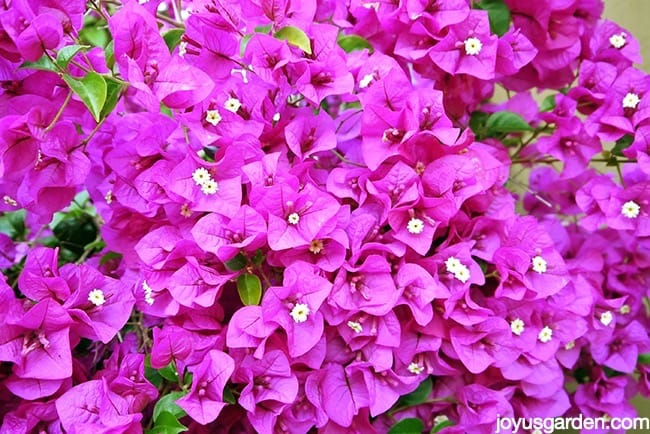
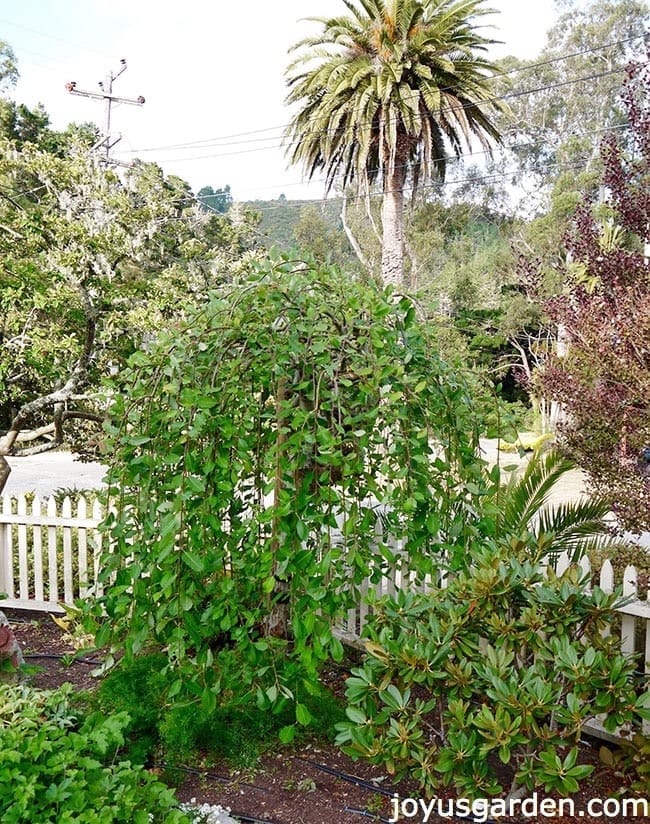
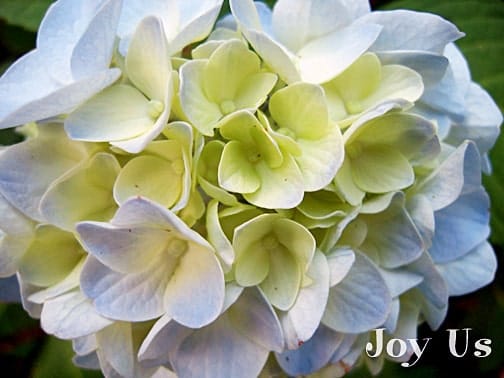

Hi Nell,
Was out doing landscape duties, my smaller/round lantana were blooming/greening in a nice round ball but the old dead legs were sticking out by a foot or so. I found that this dead growth mostly lifted right out so I lightly removed, some light cutting of the dead stuff down to level of new green leaf area.
Thing is, handling these dead branches (no gloves), my hands began to tingle….and in the sunlight I could see that my hands were covered by the very tiny hairs, stuck into my skin, that had been on the dead branches….like “micro thorns of cactus”, most of which were very painful. I realize I must be a “fortunate” landscaper to be allergic to lantana but it seems these “burrs” would irritate anybody. First, have you heard of this before, and secondly, I could find no info on the web about it? And yes, going back out …..gloves on! I think it is even worth it to print on lantana plant labels to “always prune with gloves/skin irritant”. Thoughts?
Yes Carole, I mentioned this in the post. Here’s what I said: “The leaves have a light sandpaper feel to them.
To some people, they’re a skin irritant. They cause a minor dermatitis reaction, not a severe rash like poison oak or poison ivy. It has never aggravated me but I usually wear gloves when pruning any outdoor plants.” They should have a warning! Nell
I have the gold trailing and we had a freeze in summer so I trimmed it down small. now already as huge as last year. . but I’m afraid to trim branches going into flowers because last year doing this ,it made the rest of the untouched plants blooms close and took over a month to bloom again